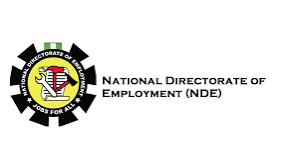Rural dwellers, subsistence farmers, illiterates top 2,051,972 poorest and most vulnerable Kaduna state citizens from 524,424 families captured in the State’s Social Register (SSR) for the Poor and Vulnerable Households (PVHHs).
Coordinator, State Operations Coordinating Unit (SOCU), Kaduna state Planning and Budget Commission, Nina Dawong, told a one-day media roundtable on the State Social Register and Rapid Response Register (RRR) that the register as at February 28, 2021 covers 5,504 communities in 166 wards of the 23 local government areas of the state.
She said 93.6% of the poor residents lives in the rural areas, with 2.3% or 46,836 of the poor residents are living with disability, 34% are between 16-35 years, while 45.2% are self employed in agric sector, 25% are unemployed and 63.6% are without education at all.
According to Nina, SOCU was saddled with the responsibility of generating and maintaining social register of the poor and vulnerable households in the state. She noted that the dara had already been put to use by the Federal Government in delivering its Cash Transfer programme and would be available for other social protection interventions.
The coordinator said that the register began in 2017. She said that 93.6% of the 524,424 PVHHs live in rural areas, while 6.4% were in urban centres. Kachia LGA has the highest number of PVHHs with 41,205 households, followed by Sanga LGA with 37,508 poor households and Kajuru LGA with 36,233 households. Zangon Kataf has the least PVHHs with 9,222 households, followed by Soba 10,388 households and Jema’a 11,027 households.
“Of the 2.051 million individuals, 1.1 million (52.2%) are females, 981,845 (47.9%) are males. Also, 25% of the heads of the PVHH are unemployed, 45.2% are farmers, 0.1% are pensioners and 12.8% are housewives and house helps.
“On education status, 63.6% of the head of households had no formal education, 11.3% had primary education, and 15.9% had senior secondary school education, 3.8% has junior secondary school education. Also 1.5% has national diploma (ND), 0.5% has higher national diploma (HND) and bachelor’s degree respectively and 1.2% has certificate of education,” she said.
The Coordinator added that in age distribution, 34% of individuals in the register were between the ages of 16 to 35, and 28% between the ages of six to 15. Children from zero to five years made up 14%, those between 36 to 65 years, 20%, while those from 65 years and above made up four%.
The Head of Operations, SOCU, Biya Dogon, explained that the ongoing register was generated through a comprehensive process known as Community Based Targeting (CBT) which defines poverty and identifies those that fall withing the identified criteria.
The Executive Director, Jalad Media Concept, Mr. Joshua James, who coordinated the roundtable discussion explained that the engagement was organised to promote interactions between SOCU and the media to ensure that citizens are well informed about government activities and interventions to enlist their support.




